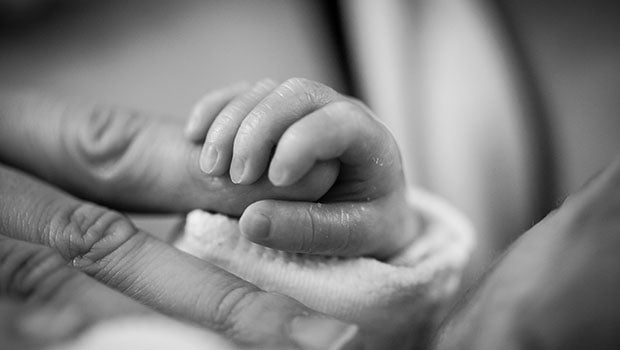
Project Red Rain in the SGH Neonatal Intensive Care Unit reduced radiation hazards to infants in intensive care and the nurses that look after them
A note from a parent read: "Dear doctor, my premature baby is warded in intensive care. I feel helpless and I'm afraid that he is exposed to all the radiation from the X-rays you have to take…"
Seeing one's small and vulnerable newborn lying in the incubator of the Neonatal Intensive Care Unit (NICU) is the last thing any parent wishes to experience. Adding to the anxiety is the perception that their little one is over-exposed to radiation in the ward.
The smaller a baby is at birth, the more X-rays he needs for diagnosis and monitoring of his clinical response. A baby with very low birth weight, less than 1500g when born, goes through an average of 35 X-rays in the first six to eight weeks of his life. Unfortunately, such babies also have a higher risk of subsequent readmission and further exposure to X-rays.

Above: the Project RED-RAIN logo
"We know that modern X-rays are safe, but imagine if these helpless babies in NICU were your own – you would want to reduce the risk even further."
- Dr Priyantha Edison, Registrar, Department of Neonatal and Developmental Medicine,SGH
Too much radiation in the NICU?
Although the low dose of radiation used each time is within Joint Commision International's standards of radiation safety, and X-rays are ordered only when absolutely necessary, medical professionals at Singapore General Hospital's (SGH) NICU wanted to reduce such exposure even more, following the principle of "as low as reasonably achievable".
One of the people deeply affected by the plight of NICU newborns is Dr Priyantha Edison, Registrar in the Department of Neonatal and Developmental Medicine in SGH. "We know that modern X-rays are safe, but imagine if these helpless babies in NICU were your own – you would want to reduce the risk even further."
NICU nurses were also concerned about incidental exposure to radiation whenever the X-ray machine is wheeled into the ward. Dr Priyantha explained, "Taking an X-ray of a 500g baby is far more challenging than doing one for an 80kg adult. Someone, usually a nurse, has to hold the baby still for the radiographer to get a clear image."
Radiographers are familiar with the risks of radiation and have protective gears available to them. However, this was not the case with the nurses in the NICU. Assistant Nurse Clinican Ms Chang Pisun said, "The fear of occupational radiation exposure ran high among the nurses, especially in those who had plans to start a family. The lack of knowledge in radiation created an exaggerated feeling of anxiety."
More protection and clearer guidelines
To make it safer for newborns and staff, Dr Priyantha got together a team comprising nurses, radiographers and radiologists to REDuce RAdiation hazard In the Neonatal ICU (Project Red Rain). The team set itself a goal of reducing radiation hazard opportunities in the NICU by 75% in six months.
The team conducted an audit of the bedside X-ray process in the SGH NICU. To get a baseline, they measured the radiation doses the babies received and the dose at various distances in the unit when an X-ray is being taken. They scrutinised the workflow of bedside X-ray imaging process to identify all potential opportunities for radiation hazard.
Based on their findings, the team pinned down areas for improvement and implemented a series of changes.

Nurses assisting in X-rays are now given lead aprons and thyroid guards. The babies undergoing X-ray are given a modified gonad shield to protect the reproductive organs.
They introduced a modified gonad shield, used to protect the infants' reproductive organs, which can also hold the babies still during X-ray. This, in addition to limb restrainers customised for infants, minimises the need for a nurse to be in the X-ray zone to hold the baby. Portable lead barriers and optimal spacing of cots reduce the risk of scatter radiation to other infants.
Nurses assisting in X-rays are now given lead aprons and thyroid guards as additional protection. The team then reached out to radiographers and nurses staffing the NICU to increase their awareness of radiation safety, train them in the safety measures and ensure adherence to the safety checklist.
Toh Hong Guan, Senior Principal Radiographer, explained, "Now, there are stricter guidelines and clearer instructions on administering X-rays in the NICU. For example, if the doctor only ordered a chest X-ray, the radiographer has to take all measures to not expose other areas unless there are explicit instructions to do so."
Worthwhile changes
The team's efforts paid off. By the end of six months, the overall radiation hazard opportunities in the NICU had reduced by 84%, exceeding their target of 75%.
"More than a year has passed since the end of the project, and compliance to the new guidelines remain high. We seldom see discrepancies between the X-ray request and the target area captured, or the nurses' fingers visible in the X-ray images captured now," added Dr Priyantha.
"Nurses can even explain the safety standards to parents to help address their concerns! This is a big improvement compared to when nurses themselves were fearful and felt unprotected."
One of the best rewards, Ms Chang feels, was experiencing the change in her colleagues' morale. "With the safer practices and new knowledge, our nurses radiate confidence in their work and when communicating with anxious parents. Staff morale in the ward is high, because they know they are all safe at work."

Team RED-RAIN (L-R): Principal Radiographer Lee Li-Na, Senior Principal Radiographer Toh Hong Guan, Dr Varsha Atul Shah, ANC Chang Pisun, Dr Priyantha Edison and Dr Sarat Kumar Sanamandra













 Get it on Google Play
Get it on Google Play